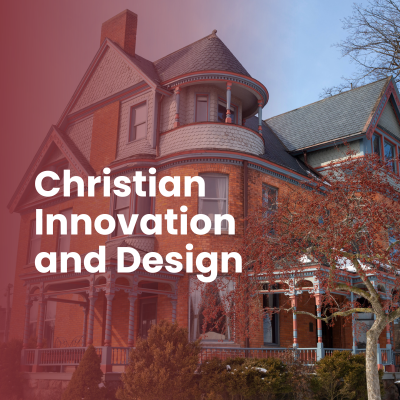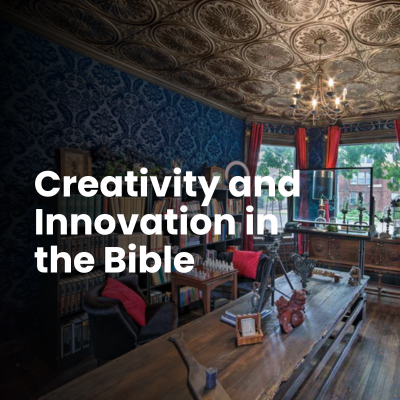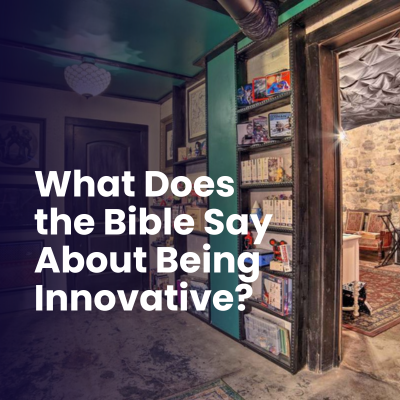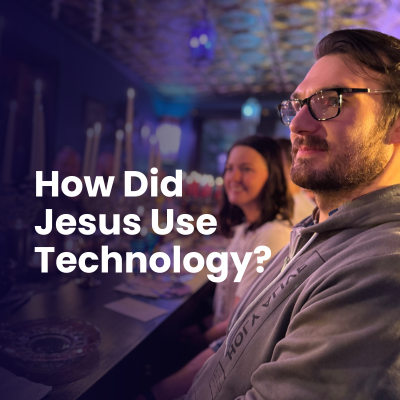This blog is part of a larger exploration concerning Christian Innovation and Design, within a section focused specifically on Design Thinking Tools as best used in church ministry. Here, we will answer the question, “What are the tools of design thinking?”
What is design thinking? Design-thinking refers to the philosophy of iterative problem solving. Design thinking tools are the specific methods and processes which can be repeatably employed to generate new and innovative approaches to ministry problems.
The core principles of design thinking for ministry are encased in the acronym C.U.P.I.D (because they generate things we LOVE!). Design thinking is:
– collaborative (meaning, we recognize we all have blind spots and trust one another to help us see past them); while we value innovative and creative voices, we know we must also defend ourselves against becoming an echo-chamber where the wisdom of the common people is ignored, disdained, or overruled.
– user-centered (not doctrine or dogma centered); the participants must be the first concern, not the performers (clergy or priests or stage-friends) and not the dissemination of religious information
– practical (meaning, we’re actually going to implement this not just talk about it); this has to be a solution we can attend/experience/enjoy, not just more talk about how ministry “should be”
– iterative (meaning, we’re always going to be making tweaks and changes as we progress); we know we’ll never get it totally right, so we build our projects/experiences/offerings with space for incremental improvement (as per the Japanese philosophy of kaizen)
– desirable (meaning, in the end we’ve designed something we want); the worst solution in the world is one that makes you groan every time you use it…ministry is no different. The whole reason we began the process of innovation was to design solutions that were more meaningful, more useful, and more enjoyable.
What are the 5 types of design thinking? You might consider these the stages of design thinking, which Fossores Innovation and Design has incorporated into the acronym D.R.E.A.M.
* Delve into an NPO (need, problem, or opportunity) within either your church or your community. This can be something practical—like “How do we increase our Sunday visitor flow?” or “What can we do to help the homeless get adequate shelter?” —or something metaphysical—like “How can we help form healthy disciples?” or “How can we experience the presence of God more fully in worship?”. The point of “delving” is to identify as specific an NPO as possible and to frame it as a question, such that we can supply an answer at the end of the design-thinking process.
* Restrict the scope of our experimentation to fit our material, social, and schematic constraints. Material constraints include time, space, and money. Social constraints concern those issues that will be “costly” for your community (such as certain theological ideas that chafe, or perhaps the amount of favors you’ll need to call in, or the amount of energy you’ll need to expend persuading people to change). Schematic constrains include deciding whether this is a one-time event or an event to be repeated; whether this will be on/offsite; whether this will be primarily for the church (insiders) or the community (outsiders).
* Explore the related SIMs (stories-images-metaphors) in both scripture and culture. Here we want to avoid looking simply for Bible verses that support our efforts, but instead look for the SIMs that will allow us deeper, more holistic spiritual insights. Likewise, we don’t just want to find cultural fads and copy them, but to find specific cultural trends, memes, and symbols that reveal the spirit of the times. Finding 10 SIMs each from scripture and culture will give us a broad pallet of ideas which we can then compare and contrast to identify overlap; those overlaps will be the raw materials with which we compose our proposed solutions.
* Attempt several prototypes; meaning, mock up—with as much detail as possible—a rough draft of what a solution could be. For example, if you’re trying to answer the question “How can we encourage more bodily, kinesthetic, worship in our liturgy?” then you’d want to do things like: draft a few written liturgies that rely on the SIMs above; create models of the worship space (using cardboard or Lego, etc) to see what the opportunities/obstacles might be; host beta-test events where small groups of people participate in a variety of proposed activities and observe their behavior and ask for their feedback, etc. The point it, you want to actually DO and TEST your solution in a rough-and-ready environment before trying it out for real in your church. We recommend going through four versions of each prototype. Version 1 is a quick-and-dirty attempt just to see where the obvious wins/misses are. Version 2 makes significant changes, incorporating what you’ve learned from Version 1. Version 3 and 4 are largely improvements on Version 2, since that’s where the biggest “aha” moments tend to arise. We recommend limiting the iteration process to Version 4 in order to set healthy expectations among team members and protect against discouragement and perfectionism.
* Materialize the proposed solution in your space with your people and try it out! Measure the results and honestly ask whether or not you’ve addressed your stated NPO. Then, return to the “Attempts” until satisfied with your solution.
Again, the design thinking phases and tools refer to the D.R.E.A.M process which uses—more than anything else—the imagination of those involved!
What are the examples of design thinking tools? The best design thinking ideation tools for each stage of Ministerial Design are as follows:
For DELVING consider using:
– CSAT (customer satisfaction survey)
– SWOT (strengths, weaknesses, opportunities, threats)
– Visions, Mirrors, Brick Walls, Speed Bumps
For RESTRAINT consider citing:
– Material, social, and schematic constraints
– Use the Theory of Constraints (TOC) to brainstorm how you might exploit these constrains for even great efficacy, or even leverage these constraints in order to craft a cleaner, more potent experience/production/offering
For EXPLORATION consider using:
– The SIMs of both Scripture and Culture
– For Scripture, consider relying on Lectio Divina
– For Culture, consider relying on Google Zeitgeist or TED
For your ATTEMPTs consider using:
– An iterative process that takes concepts from version 1 through version 4
– A Customer Journey Map
– Prototyping tools like Legos and Post It notes
For MATERIALIZATION consider using
– Low risk, beta-offerings when you can soft launch your experience/production/offering
The more experience you have with design thinking for ministry, the more you’ll enjoy the solutions you create. And, if the task seems daunting, let us help. Fossores Innovation and Design specializes in church revitalization, creativity, and change.











Leave a Reply